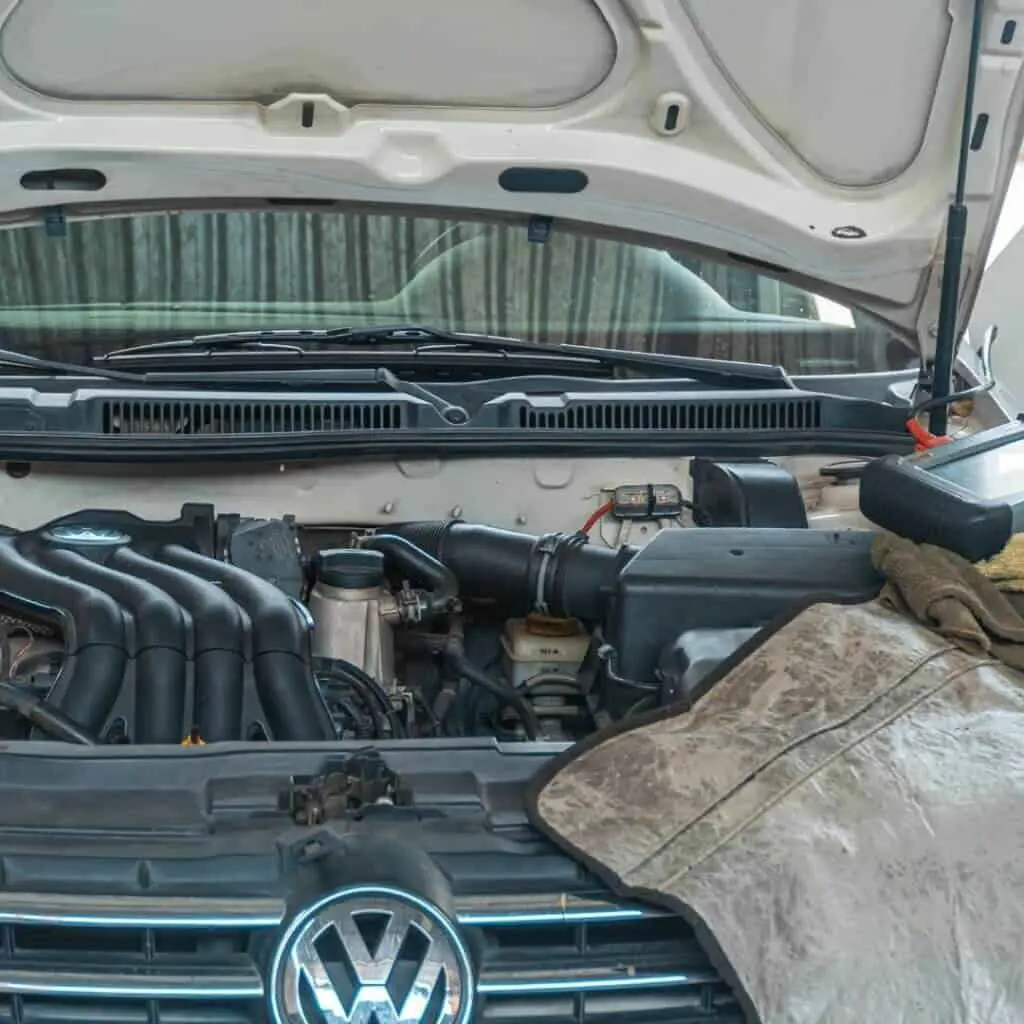Looking for insights on the “G-Wagon Years to Avoid”?
The Mercedes-Benz G-Wagon, or the G-Class, is a big-sized luxury SUV series that has been in production for over four decades. It has gained a reputation for its rugged off-road capabilities, luxury, and iconic design. The SUV was primarily designed for military usage.
However, as newer variants got considerably more luxurious, the general public began clamoring for the car. Therefore, civilian versions were also developed.
Although G-Wagons are popular and coveted by many, not all models are reliable. Some have been plagued with issues that can lead to costly repairs and frustration for owners. It’s essential to know which years to avoid when considering a purchase.
This comprehensive guide addresses the various issues commonly associated with specific G-Wagon models. It aims to shed light on the years of the G-Wagon that have elicited concerns among owners. Through the article, we will help you to make an informed decision and avoid any potential troubles.
G-Wagon Years to Avoid and Why

The Mercedes G-Wagon series has enjoyed a long production history since its inception in 1979. It has also undergone numerous generations, facelifts, and upgrades. However, the iconic exterior design has remained the same despite these changes.
Over 40+ years of the series, only a select few model years have been flagged as “problematic” and should be approached cautiously, particularly when purchasing a used vehicle [1].
First-Generation G-Wagon

The first-generation G-Wagon was produced from 1979 to 2018. Here are some notable points to consider for the first-generation G-Wagon:
- Early 460 Series (1979-1991)
The initial G-Wagon model had basic features and was known for its off-road prowess. However, it lacked modern features and creature comforts.
Additionally, corrosion can be a concern in older models, so thoroughly inspecting the vehicle’s condition is essential.
- 463 Series (1990-1993)
The 463 series introduced significant updates and improvements to the G-Wagon. While overall reliability improved, a few vehicles still had certain issues to watch out for. They experienced trouble with the wiring circuitry, which could lead to electrical malfunctions.
- The G-Wagon 2000
The G-Wagon 2000 model experienced quality control issues, including air conditioning and engine component problems. Model years 2002 and 2003 had potential issues with the braking system, particularly the Brake Assist system.
- The 2007 and 2009 Models
Some 2007 G-Wagon model owners reported issues with the engine’s idle control system. Drivers of the 2009 model consistently encountered problems with door latches, linkages, power window buttons, and door handles that tend to deteriorate over time.
There have also been numerous complaints regarding water leaks on the vehicle’s passenger side, primarily caused by window and sunroof leaks [2].
While engine failures and transmission rebuilds are less common, avoiding these model years is advisable to guarantee a more satisfactory ownership experience.
- The G-Wagons 2010-2012 Models
Some G-Wagons 2010-2012 models were affected by a recall related to the front airbag deployment system during these years. It’s important to check if the vehicle has been serviced for this recall and verify the status with the manufacturer. [3]
- The 2015 G-Wagon
The 2015 G-Wagon has experienced much corrosion. This may be particularly concerning for those living in areas with harsh climates or near coastal regions where salt exposure can accelerate deterioration.
Similarly, owners have raised complaints about the interior components of the 2015 G-Wagon. This may include issues with the dashboard, infotainment system, or other electronic features.
- The 2016 G-Wagon
Some owners have reported reliability issues with the mechanical components of the 2016 G-Wagon. Engine trouble, transmission, or suspension issues are common with the vehicle. Drivers have also reported issues with electrical components, such as the power windows, infotainment system, or lighting.
- The 2017 G-Wagon
The 2017 G-Wagon is a model year that has garnered significant attention due to reported issues. Many owners have expressed dissatisfaction with the interior quality of the 2017 G-Wagon. This includes materials, fit and finish, or overall build quality concerns.
Second-Generation G-Wagon

- The 2019 G-Wagon
The second-generation G-Wagon was introduced in 2019 and significantly improved the interior and exterior design. The 2019 G-Wagon has received attention for certain concerns.
The primary issue with this car is electronic malfunctions, which include trouble with the infotainment system, driver-assistance features, or other electronic components.
There have been occasional complaints about the performance of the 2019 G-Wagon. The trouble with acceleration, handling, or overall driving experience have been reported.
Consider taking the vehicle for a test drive and evaluate its performance under various conditions to assess whether it meets your expectations before purchasing it.
Oil leaks have been more prevalent in high-performance variants, and premature engine wear has affected the basic 2019 G-Wagon models.
Signs of a failing crankshaft position sensor often indicate engine-related problems, which can be costly to repair. Inspect the engine condition and compression thoroughly before considering a used G-Wagon from this model year. [4]
- The 2020 G-Wagon
The 2020 G-Wagon is the most recent model year associated with potential issues. While not all vehicles from this year will exhibit the same problems, you need to be aware of the potential concerns.
Some owners have reported technology glitches with the 2020 G-Wagon. This may include issues with the infotainment system, connectivity features, or driver-assistance technologies. You should test all technology features and ensure they function properly.
There have also been occasional complaints about quality control with the 2020 G-Wagon. This may include concerns about fit and finish, paint quality, or overall build quality. A comprehensive vehicle inspection is necessary to identify and fix potential quality control issues.
The Most Reliable G-Wagon Models

While some G-Wagon models have had their share of problems, others have proven more reliable and durable. If you’re looking for a G-Wagon that will serve you well for years to come, there are several reliable models to choose from.
The 2001-2002 and 2010-2014 models have been considered the most reliable G-Wagon models. These years have seen fewer reported problems, making them a safer bet for potential buyers. Additionally, the 2018 and 2021 models are worth considering [5].
Most Prevalent Problems with Mercedes G-Wagon

- Engine Issues
Mercedes G-Class owners may face engine problems, including oil leaks, overheating, fuel, and ignition system problems. Oil leaks occur due to worn-out seals, gaskets, or hoses while overheating can result from malfunctioning thermostats, radiators, or water pumps.
Fuel system problems, such as clogged injectors, dirty filters, and malfunctioning pumps, can lead to poor performance, reduced fuel economy, and potential damage [6].
Regular inspection and maintenance of ignition systems, including spark plugs, ignition coils, and distributor caps, will ensure optimal engine performance.
- Transmission Problems
For G-Class models equipped with a manual transmission, a worn-out clutch can be a common problem. Signs of a worn-out clutch include slipping, difficulty shifting gears, or a burning smell. Addressing this issue may require the replacement of the clutch assembly by a mechanic.
Vehicles with automatic transmissions may experience problems such as rough shifting, delayed engagement, or slipping gear. Regular inspection and maintenance of the transmission can help identify potential issues early on.[7]
- Electrical and Electronic Issues
The Mercedes G-Wagon is susceptible to various electrical and electronic issues. Common issues include battery drain, defective sensors, faulty wiring, and malfunctioning electronics, fuse, and relay issues [8].
These issues can lead to problems, from interior lights that don’t turn on to engine misfires. Common causes of electrical wiring issues include corroded connections, broken wires, and damaged circuits.
- Suspension and Steering Problems
Suspension and steering components can also experience wear and tear over time, leading to clunking noises and uneven tire wear. The car commonly experiences ball joint wear, shock absorber failure, steering box leaks, steering column failure, and suspension bushing wear.
Problems in the steering column might include play in the steering wheel or clunking noise while turning. Suspension bushing wear occurs between the control arms and the vehicle frame, causing clunking noises and uneven tire wear.
Component replacement, regular maintenance, and inspection can help prevent issues from arising [9].
- Braking System Issues
A braking system is essential for safe and reliable stopping power. Soft brake pedals, vibrating or pulsating pedals, squeaking or grinding noises, and warning lights are some of the most obvious issues.
Soft pedals result from air in the brake lines, worn brake pads, or a malfunctioning brake booster. Vibrations, pulsating pedals, squeaking, and grinding noises may result from warped rotors, uneven pads, or faulty brakes.
- Cooling System Problems
The cooling system regulates engine temperature and prevents overheating. Common issues include a leaking radiator, a faulty water pump, a clogged radiator, a faulty thermostat, and coolant leaks.
Leaking radiators, faulty water pumps, and thermostats cause engine overheating, damage, and reduced efficiency [10].
Coolant leaks can result from damaged hoses, pipes, or water pumps. Regular maintenance, flushing the coolant every two to three years, and paying attention to warning signs can help identify problems early and prevent significant damage.
Read Also: Mercedes B200 Problems
Conclusion
While the Mercedes-Benz G-Wagon is valued for its luxury, off-road capabilities, and timeless design, certain model years have raised concerns among experts and owners. Therefore, those G-Wagon model years should be approached with caution.
It’s good to thoroughly inspect any used G-Wagon from these years and consult a qualified mechanic or expert before purchasing. Being aware of the potential concerns can help you make a confident decision and avoid unnecessary headaches in the future.
This will make your Mercedes-Benz G-Wagon a worthwhile investment that provides you with a comfortable and reliable driving experience. A well-maintained G-Wagon can serve you well for more than 20 years. It is possible by following the manufacturer’s maintenance schedule and adopting good driving habits.
Read Next: BMW X3 Years To Avoid




